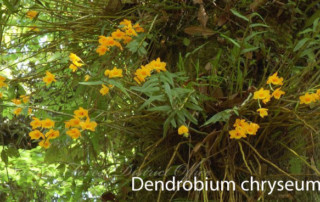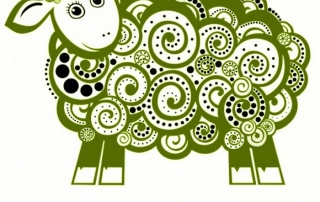Growing Bare Root Orchids: An Organic Experiment

Phalaenopsis hybrid
I admit I was a little sad to wake up this morning to one single (albeit beautiful) flowering orchid after we attended the Redlands Orchid Festival yesterday. She was a phalaenopsis hybrid that was too good a deal to pass up. After the Tamiami Orchid Show, Dr. Judith Andrews and I came home with a dozen flowering plants. This time we knew the plants we wanted and that we could get a lot more of them if we purchased bare root plants.

Aerides odorata with new root growth and flower spike.
Bare root plants are usually found in bins at orchid shows for a steal compared to the price if they were potted. They look half dead and unappealing, but with a little TLC they spring back to life. The above Aerides was a bare root cutting I purchased 2 months ago from Robert Palmer Nursery. Even after being abused (I put her in high sun and burned her leaves) she has significant new root growth and a flower spike.
We went to the show with a plan: better plants, long term blooming, and more of them. The problem is, bare rooted plants don’t always thrive. I have already learned to repot every orchid I acquire. For phalaenopsis and paphiopediliums I use fine coconut fiber, fine orchid fir bark, stalite, and sponge rock. For cattleyas, oncidiums, and dendrobiums I use a mix of stalite, sponge rock, coconut chips & charcoal. I have nearly lost several plants after believing vendors who say,”You don’t have to worry about repotting for 1-2 years.” That may be true in other climates, but in South Florida (or any wet climate) sphagnum moss or regular tree bark can turn orchid roots to mush in a matter of weeks. Orchid vendors pot their orchids to endure neglect and survive, not to thrive in home orchid collections.
Southwest Florida Orchid Society president Barb Murza advised us on how to treat bare root orchids. She explained that they have been through a lot of abuse. They have been shipped from other countries and jostled around. They endure cuts and broken roots leaving them wide open for fungal infections that can wipe them out. She recommends treatment with a systemic fungicide such as Aliete. Further, many successful growers soak any orchid they are repotting (bare root or established) and their growing media in a combination of fungicide, Super Thrive, and fertilizer.
We are growing many of our orchids as medicine so this is not an option. We substituted an organic neem oil-based 3-in-1 fungicide, miticide, and insecticide we use on our fruit trees. We added this to a gallon of water. We then added Super Thrive and the orchid food we are currently using. We soaked each orchid before we mounted or potted them, then we immersed the full pots in the solution after planting. Let’s see how it goes.
You wouldn’t know it by looking at these newly mounted/potted plants, but these are some of the showiest bloomers in the orchid world:

Dendrobium chrysanthum, Dendrobium officinale, and Rhynchorides bangkok sunset.

Dendrobium chrysotoxum

Large bloom cattleya hybrid.

D. chryseum, D. farmeri, D. hancockii, D. lawesii, D. hancockii, D. fimbriatum, D. thyrsiflorum.

Dendrobium aphyllum

Broughtonia negrilensis


